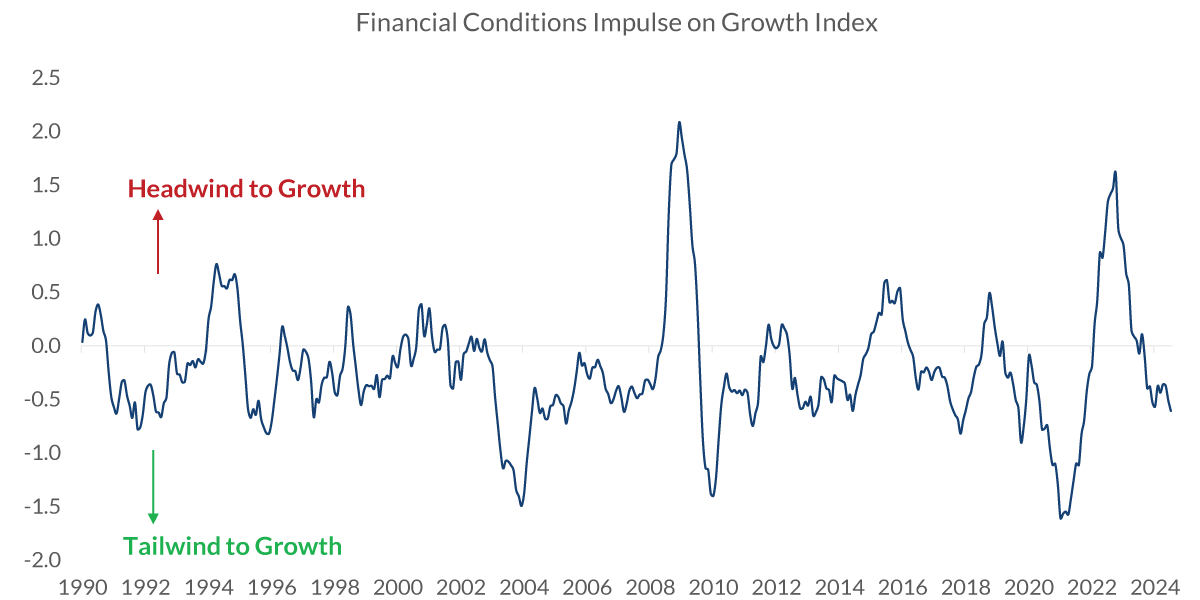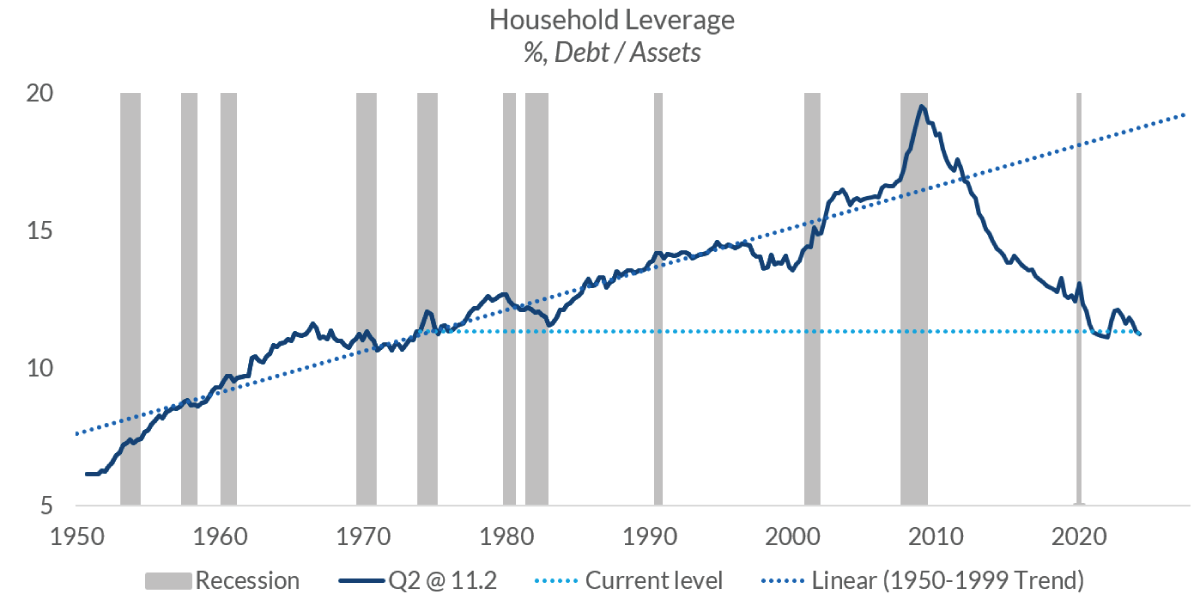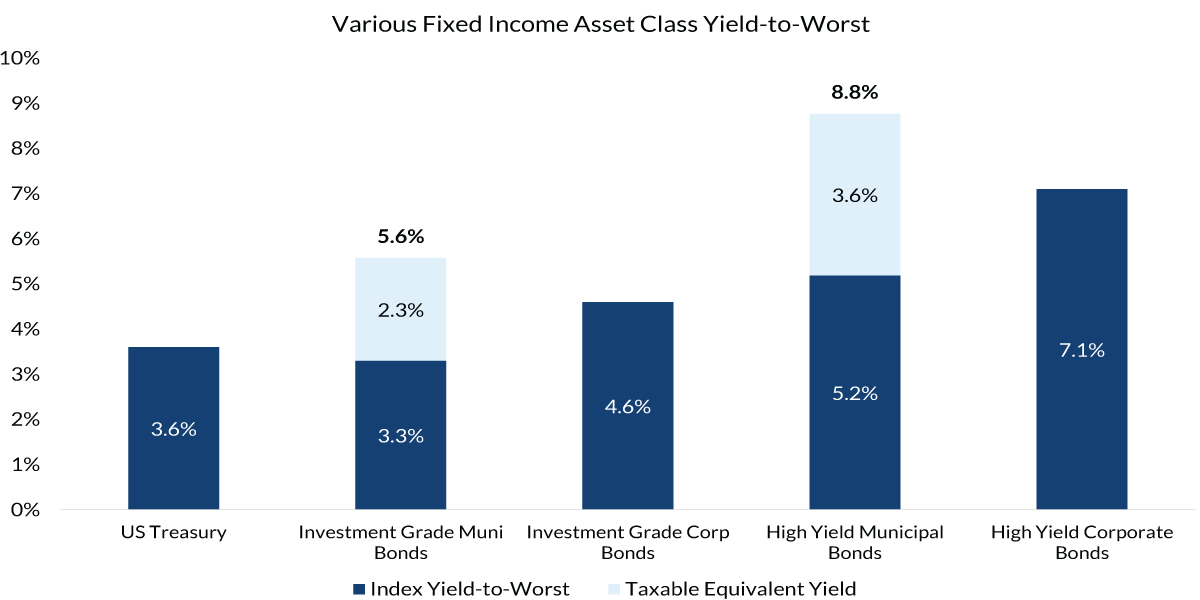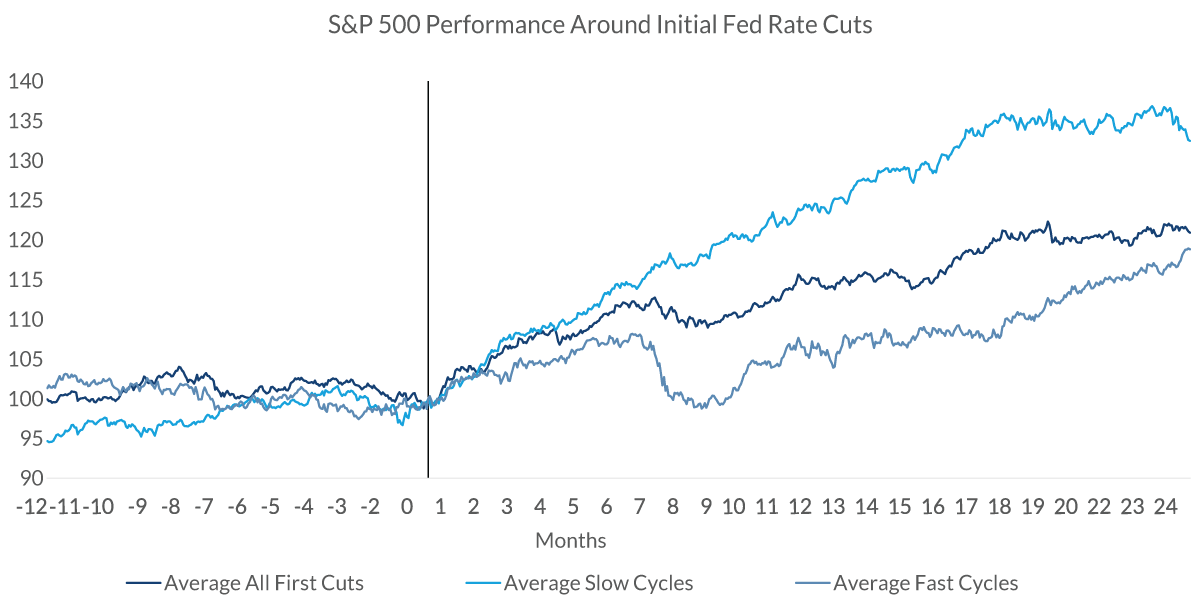September 2024 Market Update
A Deep Dive into CNR’s Economic and Investment Outlook
September 26, 2024
September 26, 2024
Market Update Summary
In our September Market Update webinar, City National Rochdale (CNR) leaders, including Chief Investment Officer Charles Luke, Senior Economist, Senior Portfolio Manager Paul Single, Head of Fixed Income Michael Taila, Senior Portfolio Manager Rachael Crane and Senior Portfolio Manager Lindsey Cook provided an update on what’s in store for the economy, financial markets and implications for client portfolios.
According to the market perspective presented by Charles Luke, the outlook for the economy and financial markets remains positive. While economic growth is expected to moderate, fundamentals remain healthy, supported by a resilient consumer, moderating inflation and the transition to a Federal Reserve easing cycle. CNR expects the Fed to reduce its policy rate by an additional 0.25% to 0.50% in 2024 but for structural pressure on long-term interest rates to continue.

Gross domestic product (GDP) is the total monetary or market value of all the finished goods and services produced within a country’s borders in a specific time period.
The Consumer Price Index (CPI) measures the monthly change in prices paid by U.S. consumers.
e: estimate.
Sources: Bloomberg, proprietary opinions based on CNR Research, as of September2024. Information is subject to change and is not a guarantee of future results.
For equity markets, broadening earnings growth and Fed rate cuts are bullish signals, though near-term volatility is possible as the U.S. presidential election draws closer. Election years usually experience declines in the run-up to Election Day, but, on average, tend to recover losses over November and December. Over the long run, factors like the state of the economy, corporate profits and Fed policy tend to be more important than party control of the presidency, as it does not dictate the direction of stocks. Although concerns have surfaced on the sustainability of AI and its growth prospects, we believe we are still in the early phase of development. Despite attractive valuations, international markets remain elusive, and the market has gone through several “head fakes” this year. Overall, easing financial conditions are supportive of a continued expansion and continued market advance.

Source: Federal Board of Reserve, as of September 2024. Information is subject to change and is not a guarantee of future results.
Paul Single gave an economic update, explaining that the economy continues to grow at a solid pace, driven by robust consumer spending. Inflationary pressures appear to be receding toward the Fed’s target rate of 2.0%, while the unemployment rate is at 4.2%, which is well within the range of 4.0% to 4.5%, considered full employment. However, the pace of hiring and job openings is slowing, concerning the Fed. The Fed’s plan for aggressive interest rate cuts should cause job hiring to reaccelerate. Although the economy is in the later stage of the expansion, the increase in credit concerns does not appear to be an economic issue.

Data current as of September 24, 2024
Source: Federal Reserve Bank
Information is subject to change and is not a guarantee of future results.
From the fixed income perspective, Michael Taila noted how the start of Fed easing will likely lead to a more normalized curve shape. Access to capital markets will likely remain solid as net investor demand continues to absorb supply. Broad credit quality is intact, which should give issuers flexibility to manage a potential moderation in economic growth, and attractive absolute yields could strengthen forward return potential.

Source: Bloomberg US Treasury Index, Bloomberg Municipal Bond Index, Bloomberg Investment Grade Corporate Bond Index, Bloomberg High Yield Municipal Bond Index and Bloomberg US Corporate High Yield Index; all data as of 9/18/2024. Taxable equivalent yield assumes 37% Federal and 3.8% Medicare Surcharge in the calculations.
Rachael Crane gave an update on equities, highlighting how Q2 earnings results show us that corporations remain healthy and profitable. Non-Tech earnings estimates are accelerating, which is a positive tailwind for future equity returns. Additionally, Fed rate cut expectations have supported a rotation in market leadership, which has broadened YTD gains away from tech stocks. Fed easing is supportive for stocks, but the type of easing cycle matters. Stocks tend to do better when officials are trying to normalize policy conditions, rather than responding to concerns over economic weakness. We also saw how recent volatility in the equity market was mitigated in 60/40 portfolios by investment grade bond allocations, and we believe this represents a potential return to a more normal market environment, where bonds can act as a ballast for investor portfolios when stock prices decline.

Source: Bloomberg, NDR Research, as of September 2024. Information is subject to change and is not a guarantee of future results.
Slow Cycles: 02/05/1954, 11/15/1957, 06/10/1960, 11/19/1971, 05/30/1980, 11/21/1984, 07/06/1995, 09/29/1998
Fast Cycles: 11/13/1970, 12/09/1974, 11/02/1981, 06/06/1989, 01/03/2001, 09/18/2007, 07/31/2019
Review Your Portfolio with Your Financial Advisor Today
City National Rochdale encourages you to review your investment portfolio with your advisor. Contact our financial professionals today to get help with your wealth planning needs.
Index Definitions
The Standard & Poor’s 500 Index (S&P 500) is a market capitalization-weighted index of 500 common stocks chosen for market size, liquidity and industry group representation to represent US equity performance.
The Bloomberg Barclays U.S. Corporate High Yield Index is an unmanaged, US-dollar-denominated, nonconvertible, non-investment-grade debt index. The index consists of domestic and corporate bonds rated Ba and below with a minimum outstanding amount of $150 million.
The Dow Jones U.S. Select Dividend Index aims to represent the US's leading stocks by dividend yield.
Bloomberg 60% Tax-Exempt High Yield/40% Municipal Investment Grade TR Index Unhedged 1% issuer cap: A custom index comprised 60% of the Bloomberg Municipal Bond High Yield Index TR Unhedged and 40% of the Bloomberg Municipal Bond Index TR Unhedged. The issuer cap is 1%.
The Russell 2000 Index is a stock market index that measures the performance of the 2,000 smaller companies included in the Russell 3000 Index.
The Russell Top 50 Index also known as the Russell Top 50 Mega Cap is a stock market index that measures the performance of the largest companies in the Russell 3000 Index.
The S&P 500 Growth Index is a stock index administered by Standard & Poor's-Dow Jones Indices. As its name suggests, the purpose of the index is to serve as a proxy for growth companies included in the S&P 500.
The S&P 500® Value measures constituents from the S&P 500 that are classified as value stocks based on three factors: the ratios of book value, earnings and sales to price.
Definitions
Municipal bonds (or “munis”) are a fixture among income-investing portfolios. Investors who want higher returns can invest in high yield municipal bonds.
Gross Domestic Product (GDP) is the total monetary or market value of all the finished goods and services produced within a country’s borders in a specific time period.
CNR Speedometers® are indicators that reflect forecasts of a 6- to 9-month time horizon. The colors of each indicator, as well as the direction of the arrows represent our positive/negative/neutral view for each indicator. Thus, arrows directed towards the (+) sign represents a positive view which in turn makes it green. Arrows directed towards the (-) sign represents a negative view which in turn makes it red. Arrows that land in the middle of the indicator, in line with the (0), represents a neutral view which in turn makes it yellow. All of these indicators combined affect City National Rochdale’s overall outlook of the economy.
Important Information
The views expressed represent the opinions of City National Rochdale, LLC (CNR), which are subject to change and are not intended as a forecast or guarantee of future results. Stated information is provided for informational purposes only, and should not be perceived as personalized investment, financial, legal or tax advice or a recommendation for any security. It is derived from proprietary and non-proprietary sources that have not been independently verified for accuracy or completeness. While CNR believes the information to be accurate and reliable, we do not claim or have responsibility for its completeness, accuracy or reliability. Statements of future expectations, estimates, projections and other forward-looking statements are based on available information and management's view as of the time of these statements. Accordingly, such statements are inherently speculative as they are based on assumptions that may involve known and unknown risks and uncertainties. Actual results, performance or events may differ materially from those expressed or implied in such statements.
All investing is subject to risk, including the possible loss of the money you invest. As with any investment strategy, there is no guarantee that investment objectives will be met, and investors may lose money. Diversification may not protect against market risk or loss. Past performance is no guarantee of future performance.
Indices are unmanaged, and one cannot invest directly in an index. Index returns do not reflect a deduction for fees or expenses.
CNR is free from any political affiliation and does not support any political party or group over another.
Equity investing strategies and products. There are inherent risks with equity investing. These risks include, but are not limited to, stock market, manager or investment style. Stock markets tend to move in cycles, with periods of rising prices and periods of falling prices.
Fixed Income investing strategies and products. There are inherent risks with fixed income investing. These risks include, but are not limited to, interest rate, call, credit, market, inflation, government policy, liquidity or junk bond risks. When interest rates rise, bond prices fall. This risk is heightened with investments in longer-duration fixed income securities and during periods when prevailing interest rates are low or negative.
© 2024 City National Rochdale, LLC. All rights reserved.
CITY NATIONAL ROCHDALE LLC NON-DEPOSIT INVESTMENT PRODUCTS: • ARE NOT FDIC INSURED • ARE NOT BANK GUARANTEED • MAY LOSE VALUE